The largest capacity drive of the classic black-cased Caviar’s, coming in at just over 1.2GB in size. These have a slightly different seek-test compared to the usual earlier Caviar’s, which makes them a little more interesting. Aside from that, they’re much the same. Even when these are covered in bad sectors, they still work quite dependably. Fortunately, this example is in perfect shape. Cosmetically, on the other hand…

Drive Attributes ------------------------------------------- Western Digital Caviar 31200 WDAC31200-08F ------------------------------------------- Capacity 1281MB Mfc Date 1995-12-29 Format 3.5" Interface PATA Platters 3 Heads 6 RPM 4500 CHS 2484/16/63 -------------------------------------------
With what is arguably one of the most sleek looking drive designs throughout history, this one has been through the wringer somewhat. These were the largest drives to sport this classic black-cased design, where Western Digital would use the newer silver-styled design on later Caviar’s concerning all larger capacities. Not to mention, Western Digital had already begun using the newer silver-styled design for models also produced using this black-cased design, such as the Caviar 2540, for example.
Under half a year later from this particular drives date of production, it would be succeeded by the Caviar 21200; a newer drive with the same capacity, yet with only two platters.
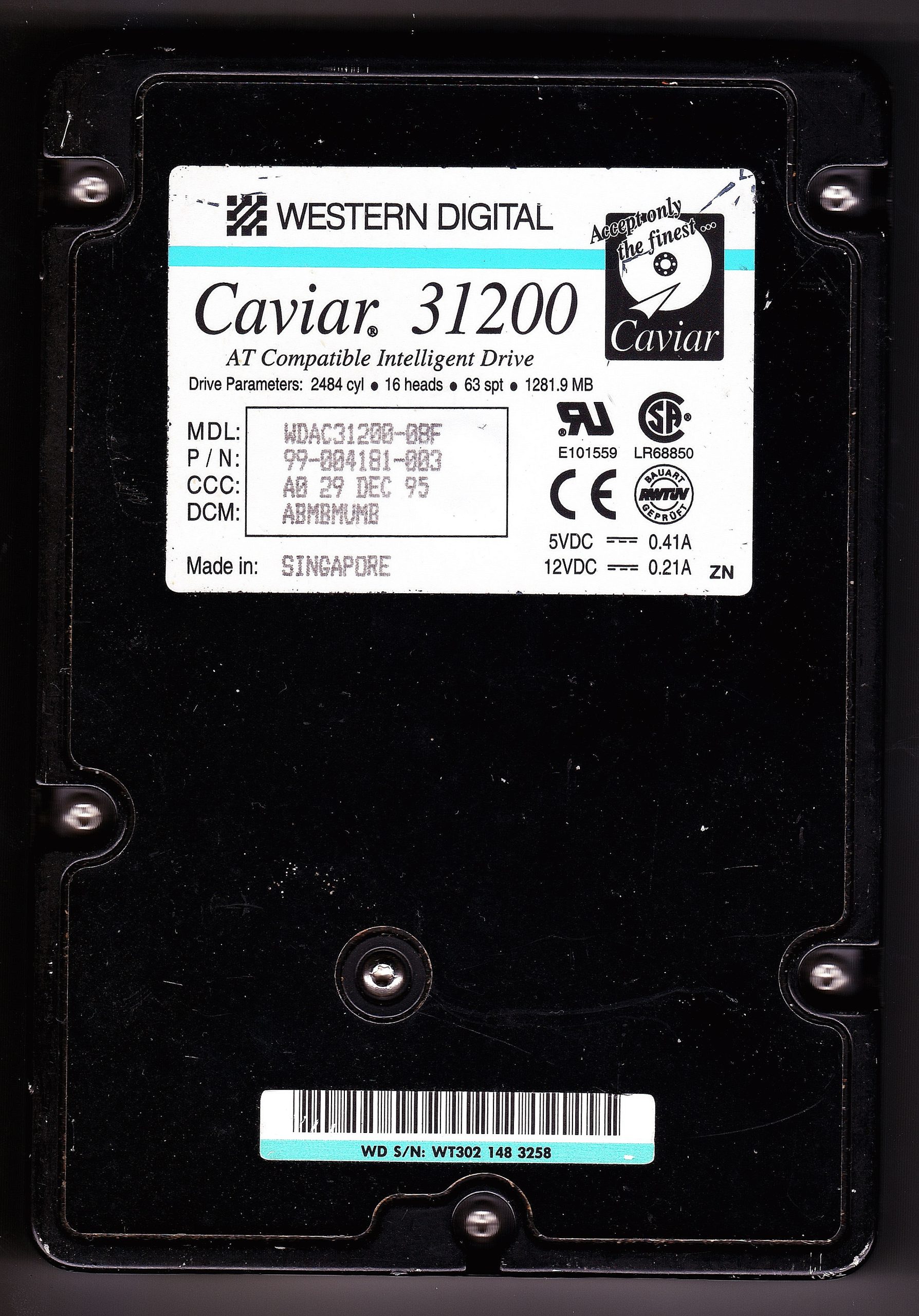
Western Digital’s initiative with colourful stripes depending on the drive model was always quite a nice feature to see in the sea of colourless labels. Manufactured in Singapore, this drive pre-dates Western Digital’s awful reliability record throughout the late 90’s, which fortunately didn’t plague any of the black-cased Caviar’s. They marginally scraped past a potential acquisition from IBM becoming still to this day, one of the last remaining three manufacturers.
The “Accept only the finest…” slogan has always been pretty neat, albeit a tad pretentious.
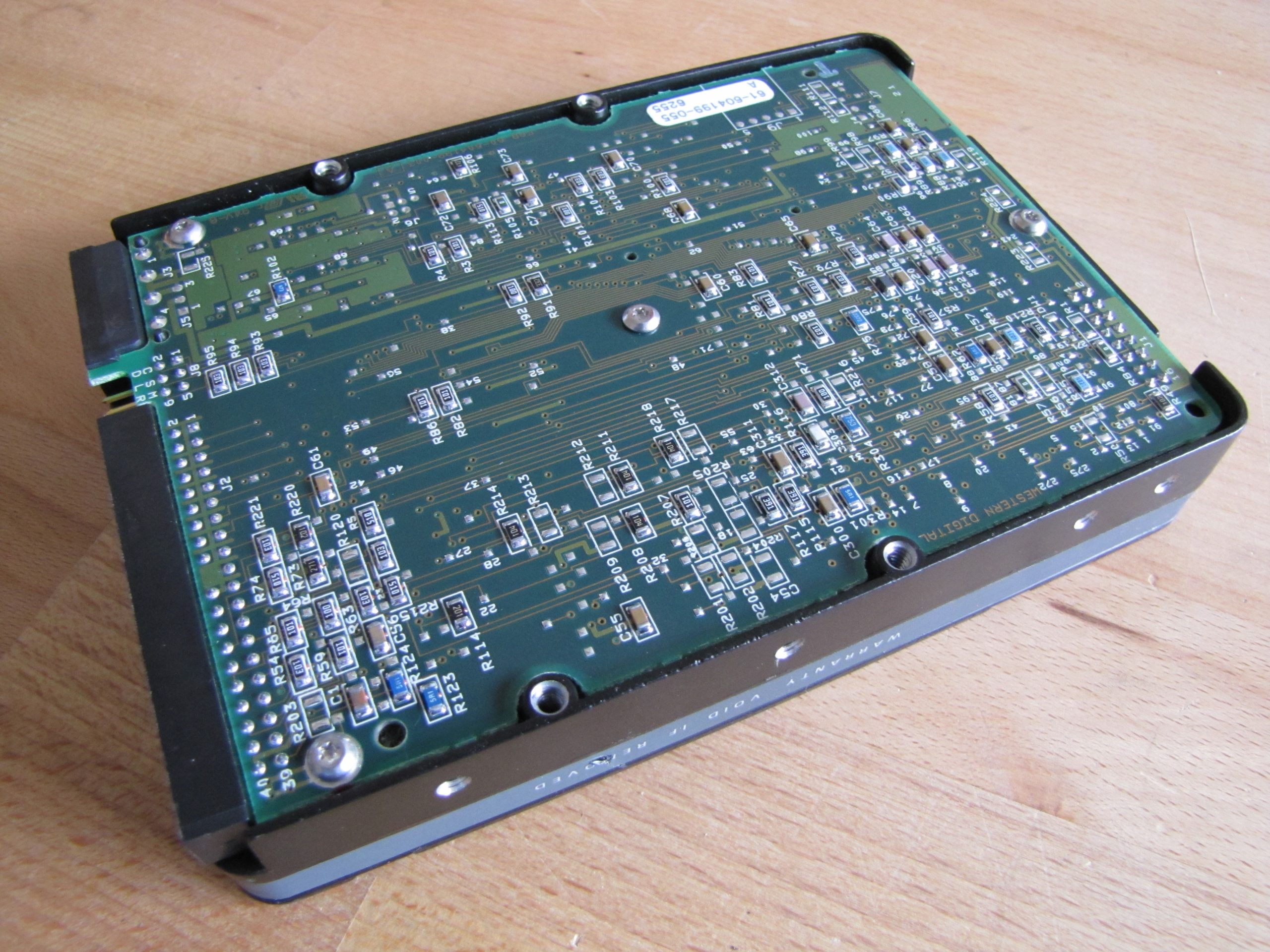
Western Digital were one of the first to flip their PCB’s on their desktop drives with this line of Caviar’s. It certainly makes them feel very high-end compared to a lot of other drives from the time. In this case having a look at the logic involves taking the PCB off; definitely not the usual situation with most drives from this era.
The mode selection header is present next to the IDE and Molex connectors, labelled as J8. It has the following pinout:
+5-3-1+ Single Drive
|X X o| Configuration
|o o o| (Neutral Position)
+6-4-2+
+5-3-1+ Single Drive +5-3-1+ Master Drive
|o o o| Configuration |X o o| Configuration
|o o o| (Standard Installation) |X o o| (Dual Drives)
+6-4-2+ +6-4-2+
+5-3-1+ Slave Drive +5-3-1+ Cable Select
|o X o| Configuration |o o X| Configuration
|o X o| (Dual Drives) |o o X| (Dual Drives)
+6-4-2+ +6-4-2+
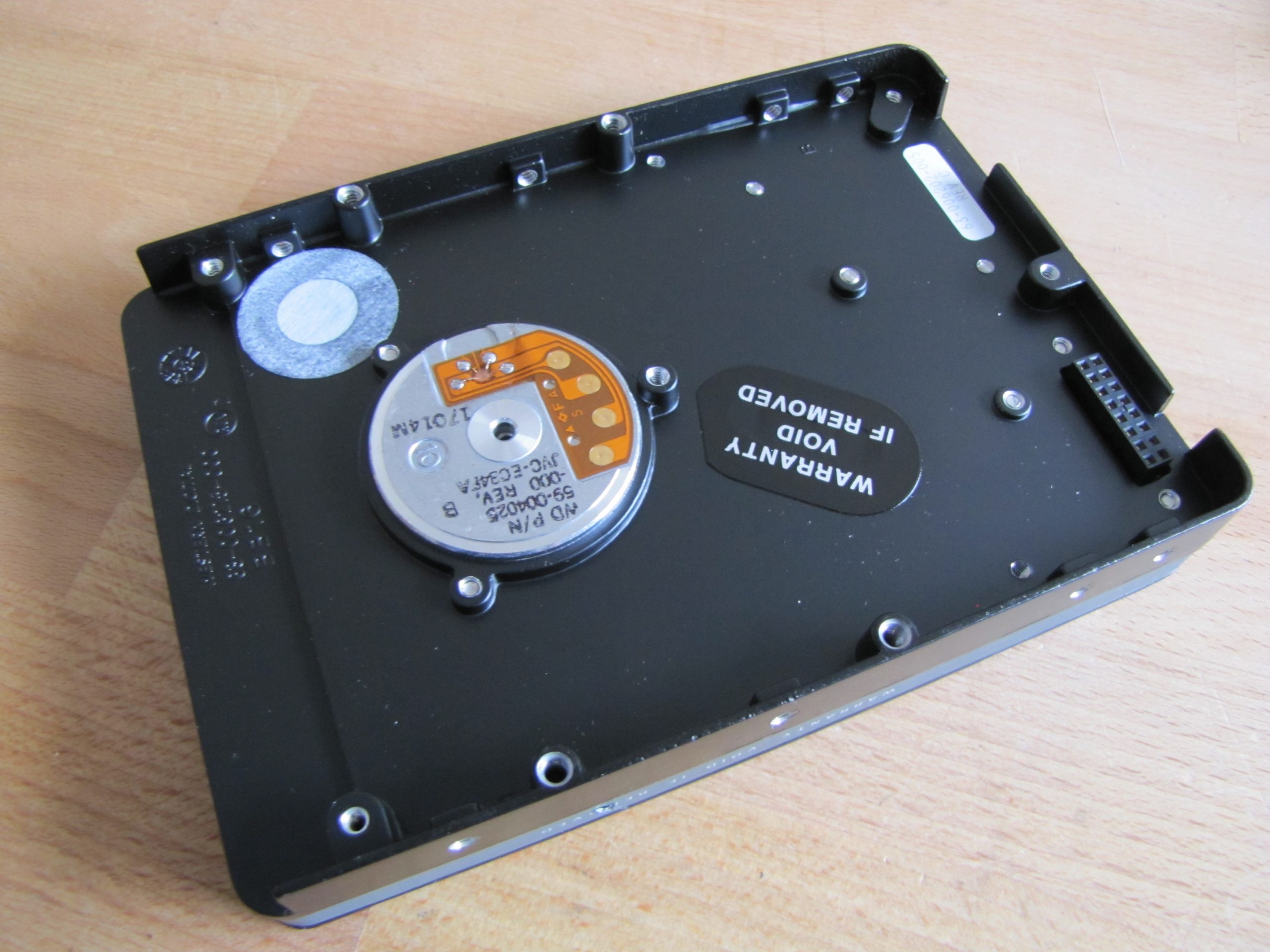
Housing a very simple design on the underside, the pressure-contact motor makes removing the PCB on this drive incredibly simple. The spindle motor was manufactured by JVC, which is something Western Digital had kept up with for a while, as opposed to the usual Nidec partnership of most drive manufacturers from the time (WD also used Nidec consistently throughout the 90’s). The interconnect header between the PCB and the drive heads is visible on the right hand side.

With some cushioning foam between the PCB and the housing, it provides a clear cutout to see the rather interesting pressure-mount system for the spindle-motor to the PCB. It’s definitely more primitive to the connectors we have today, but it certainly does the job. The contacts are gold plated, although only on the contact section of the connector.
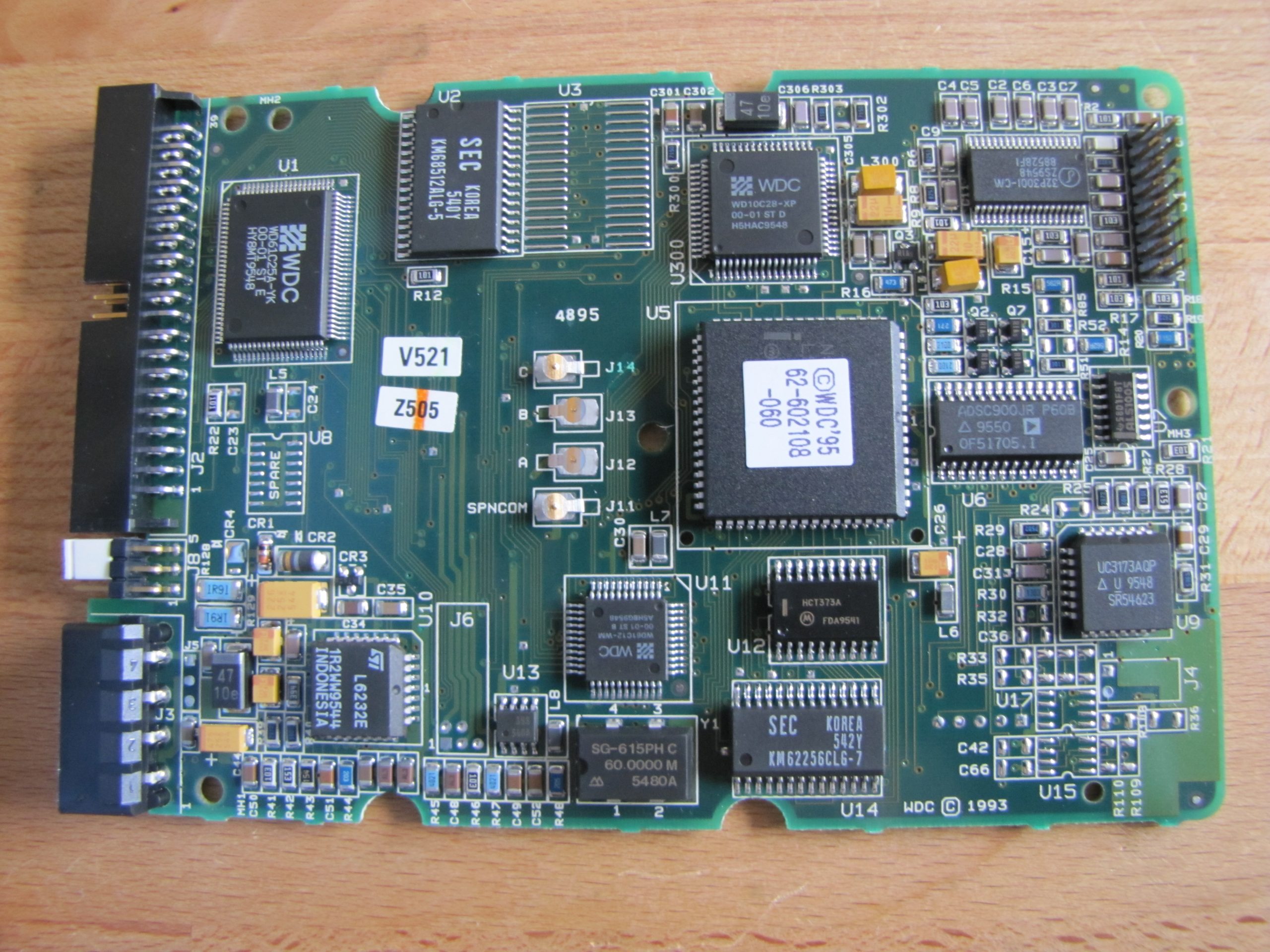
Removing the foam, the PCB layout becomes visible. There’s a lot of Western Digital IC’s as expected, as they were huge in the drive controller market at the time, being their initial form of work in the drive market to begin with.
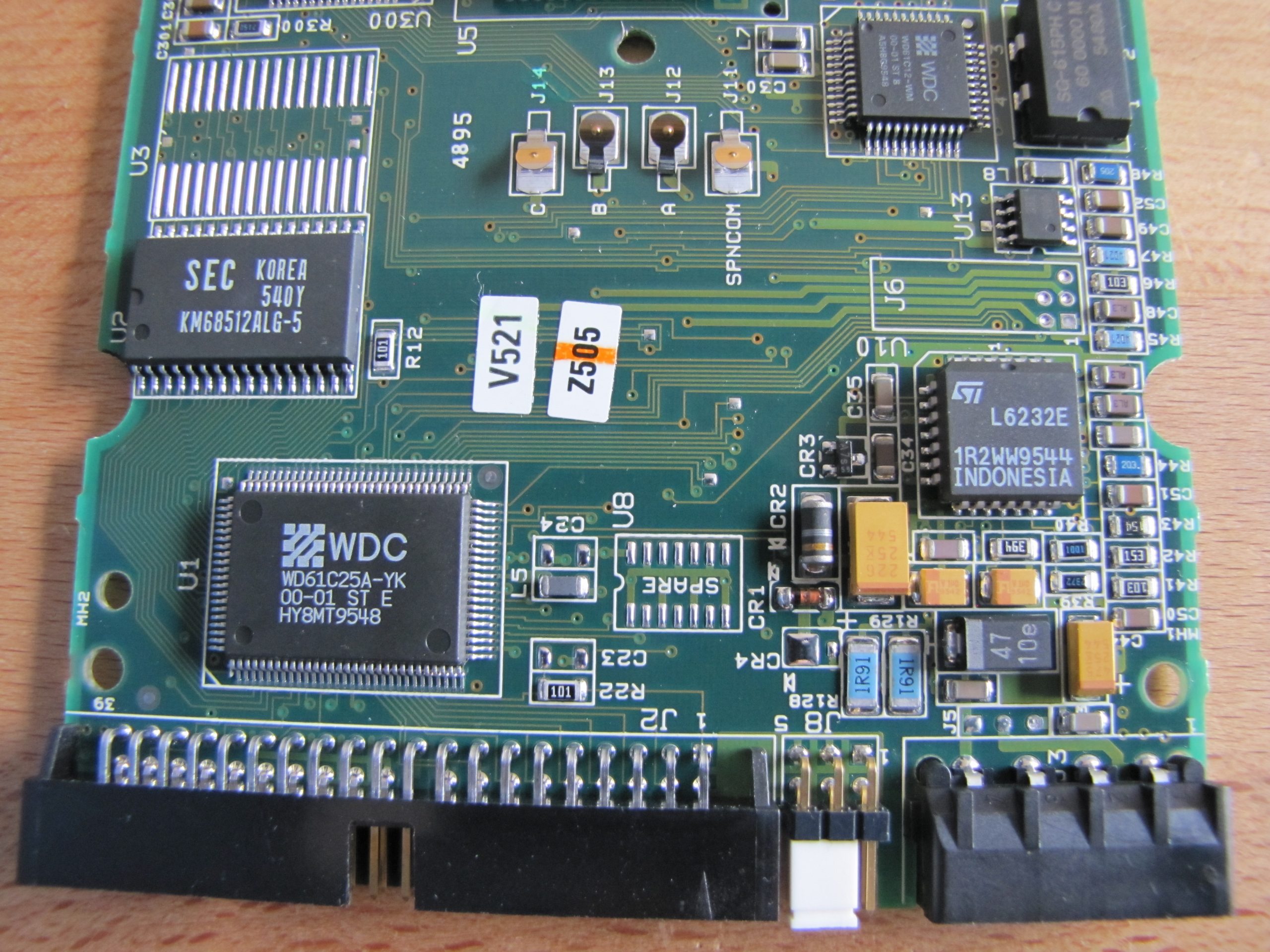
Here we can see a better look a the connectors, mode selection jumper and the pressure-contacts for the spindle motor. There’s some CMOS static-RAM produced by Samsung, with the KM68512ALG-5 IC on the top left. Most custom-built IC’s from Western Digital have no documentation, so it’s not always easy to decipher what they do on the board. Based on their locations however, it can provide a better picture as to what they do.
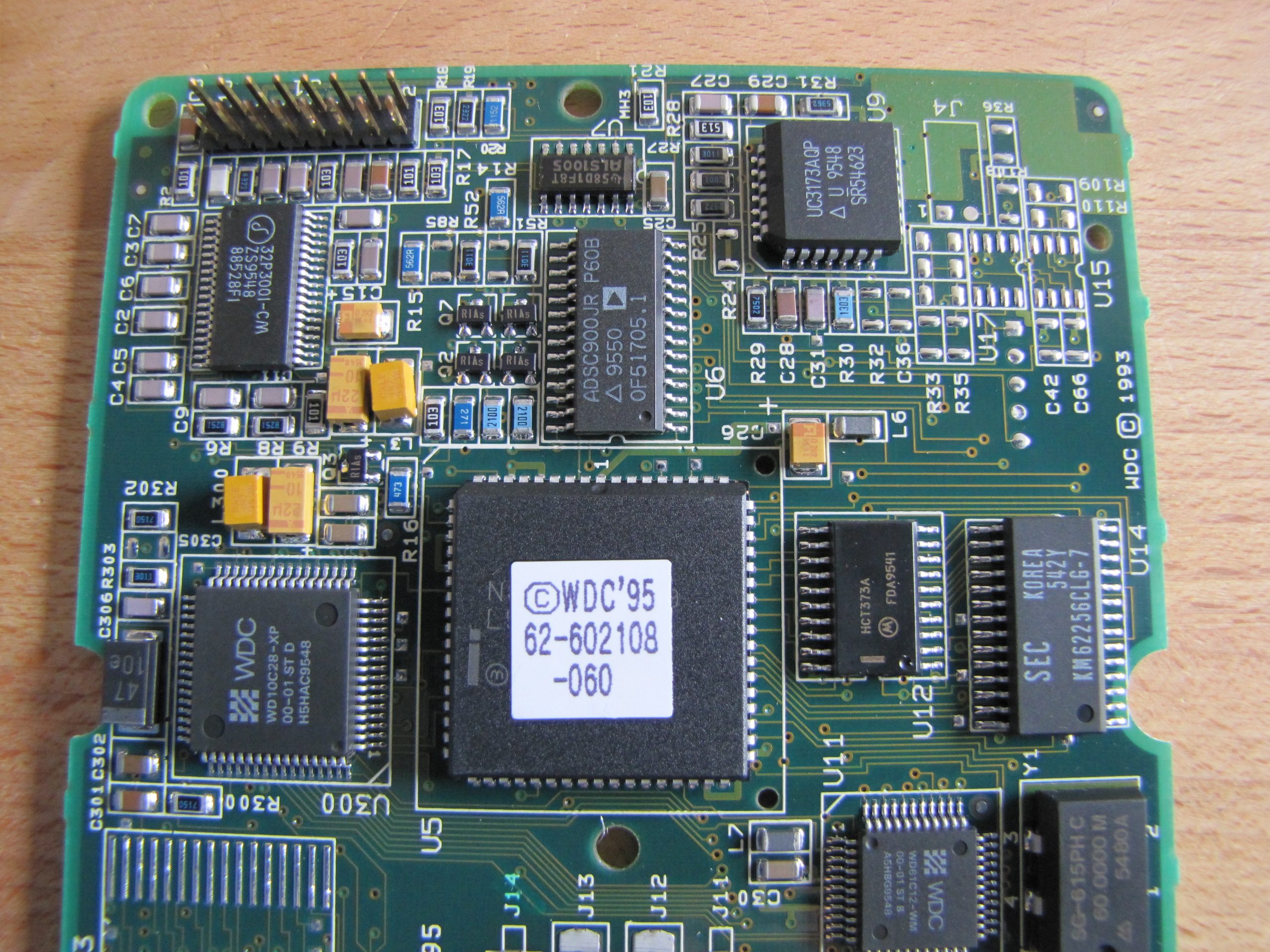
The buffer RAM is to the right, also produced by Samsung. The J1 header at the top-left is the interconnect between the PCB and the drive heads.
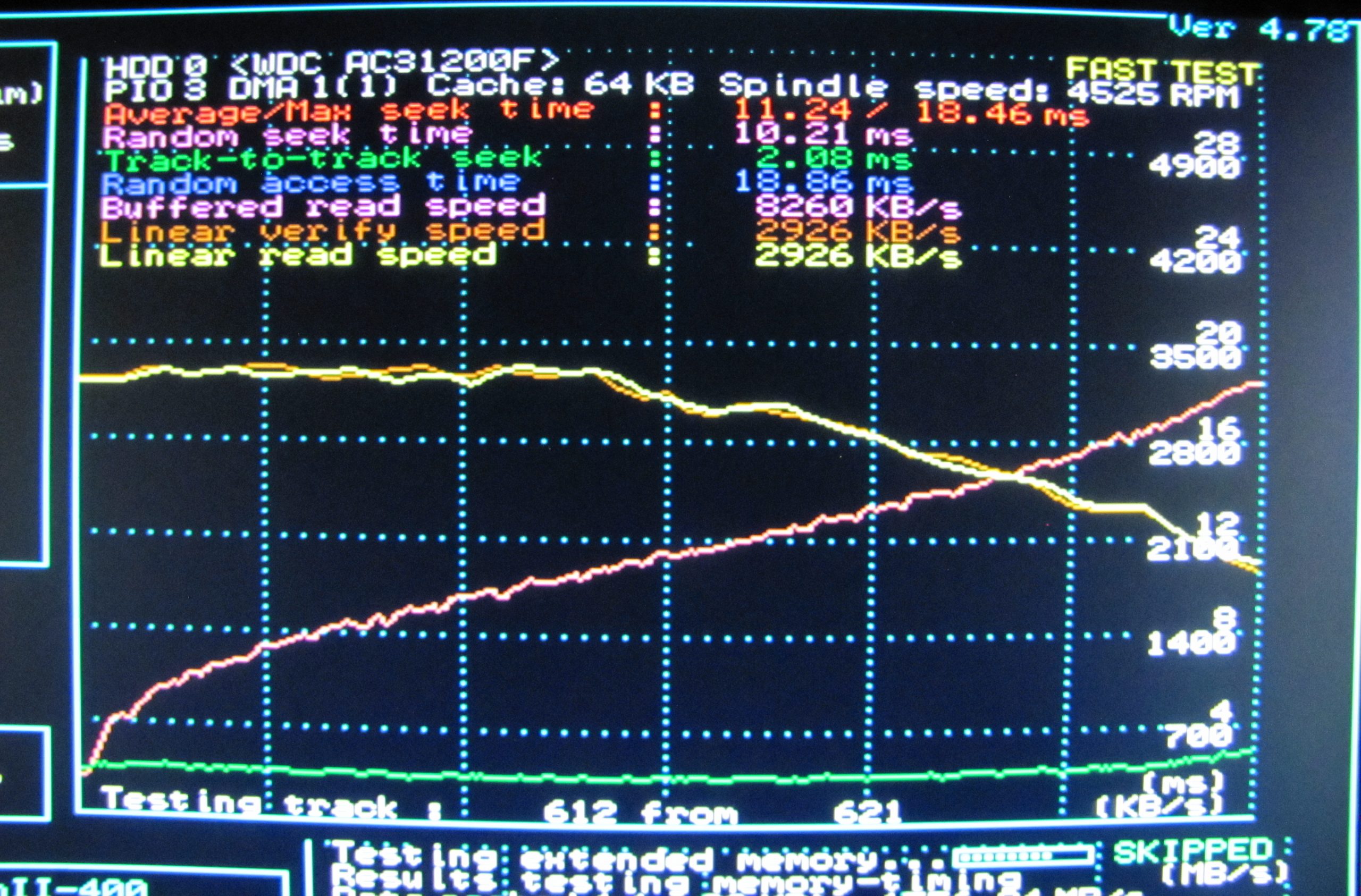
This is quite a fast drive, which was somewhat of a reputation Western Digital held back in the early-mid 90’s. It’s a joy to use when in action.
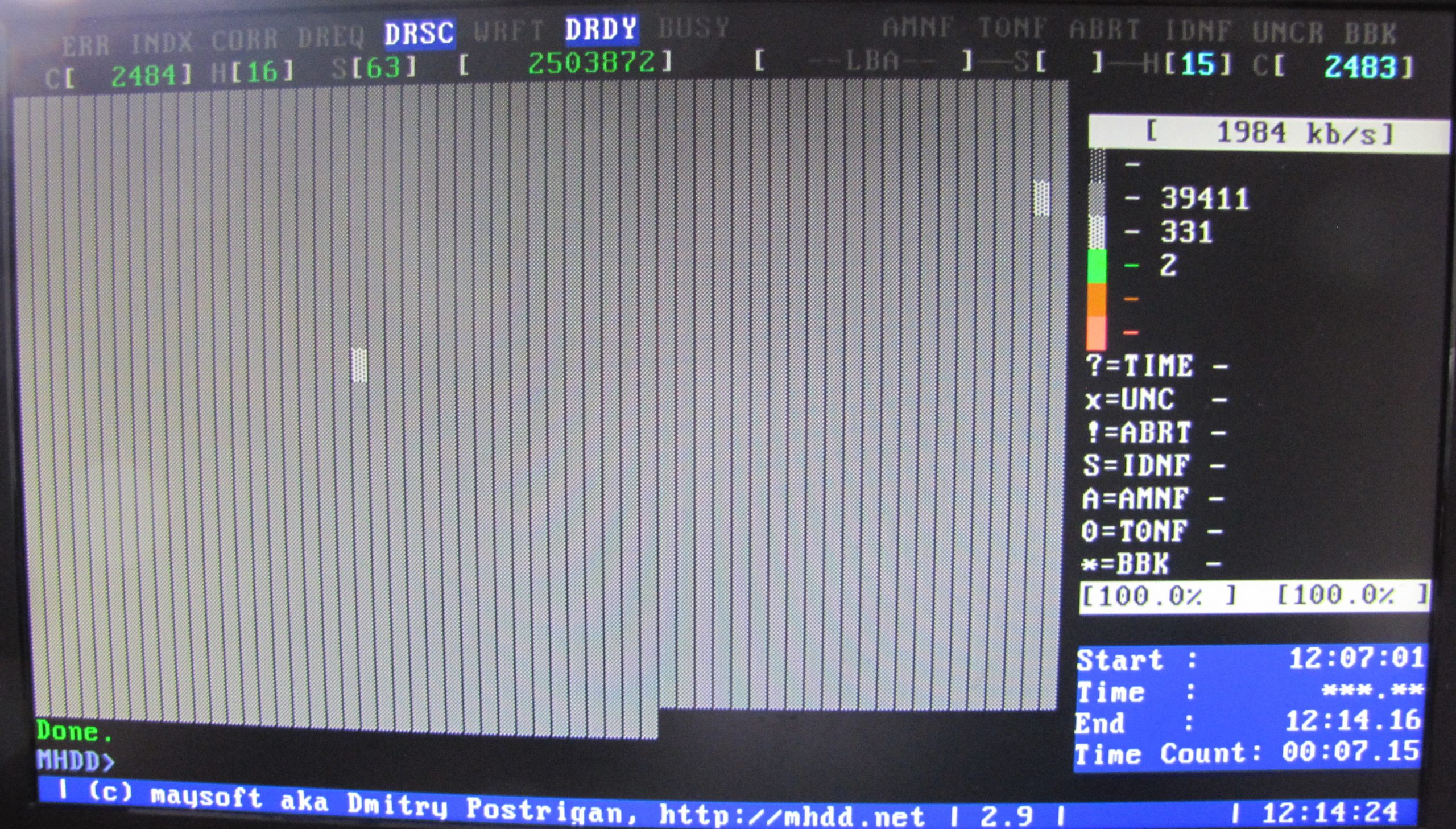
Scanning this drive with MHDD v2.9 shows my particular example is in perfect condition. Personally, I’ve had rather poor luck with this era of Caviar’s. Most drives I have from Western Digital during this era are littered with bad sectors, although they continue to work perfectly once capacity-limited. A drive like this in perfect shape is always a nice surprise, particularly with how much harder these are going to be to find in good shape within the next few decades.
They’re nice looking drives, sound nice & loud and perform well when fully functional. There’s not much more to say.
If you missed the video I made on this drive, you can find it here: